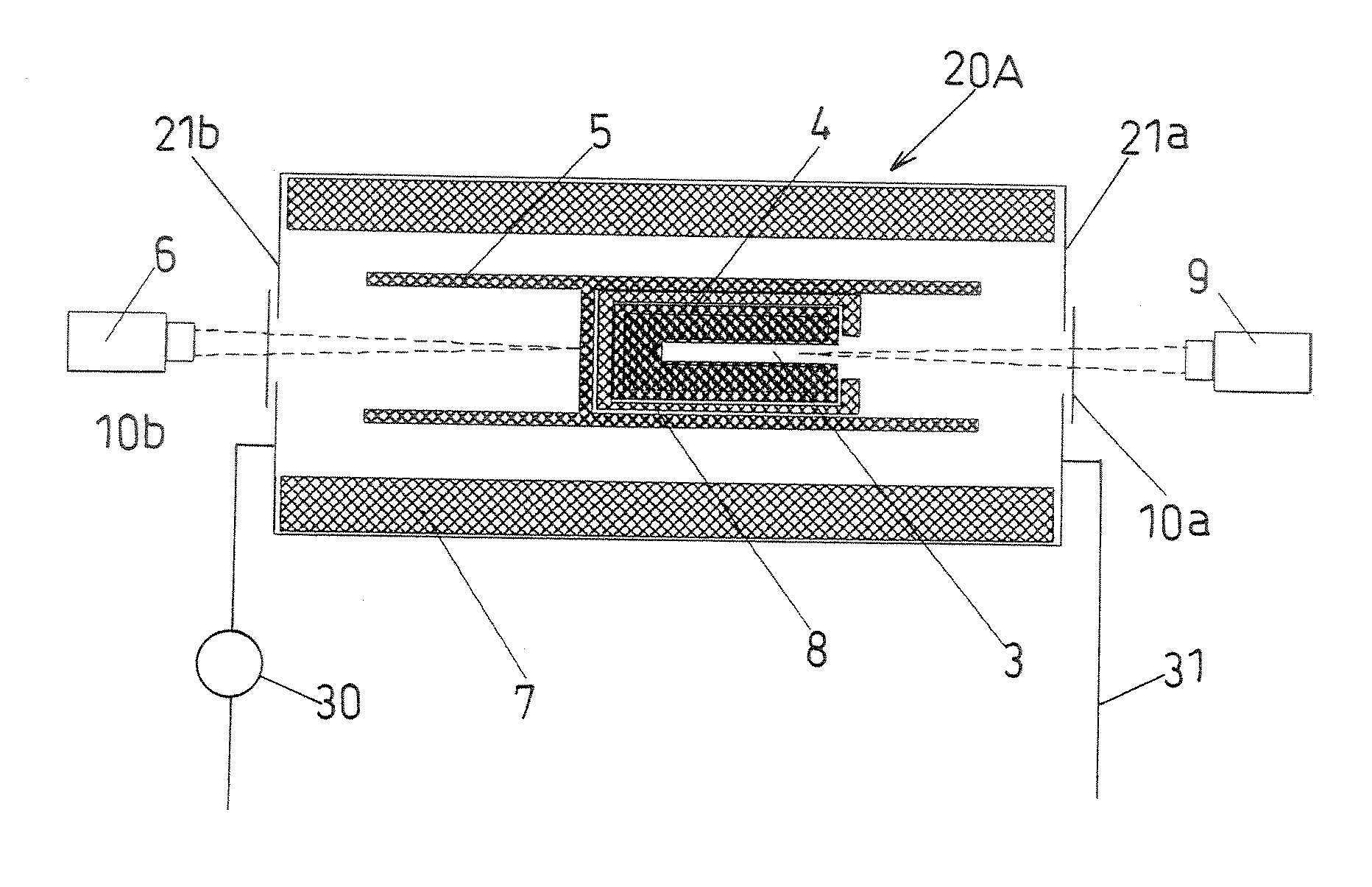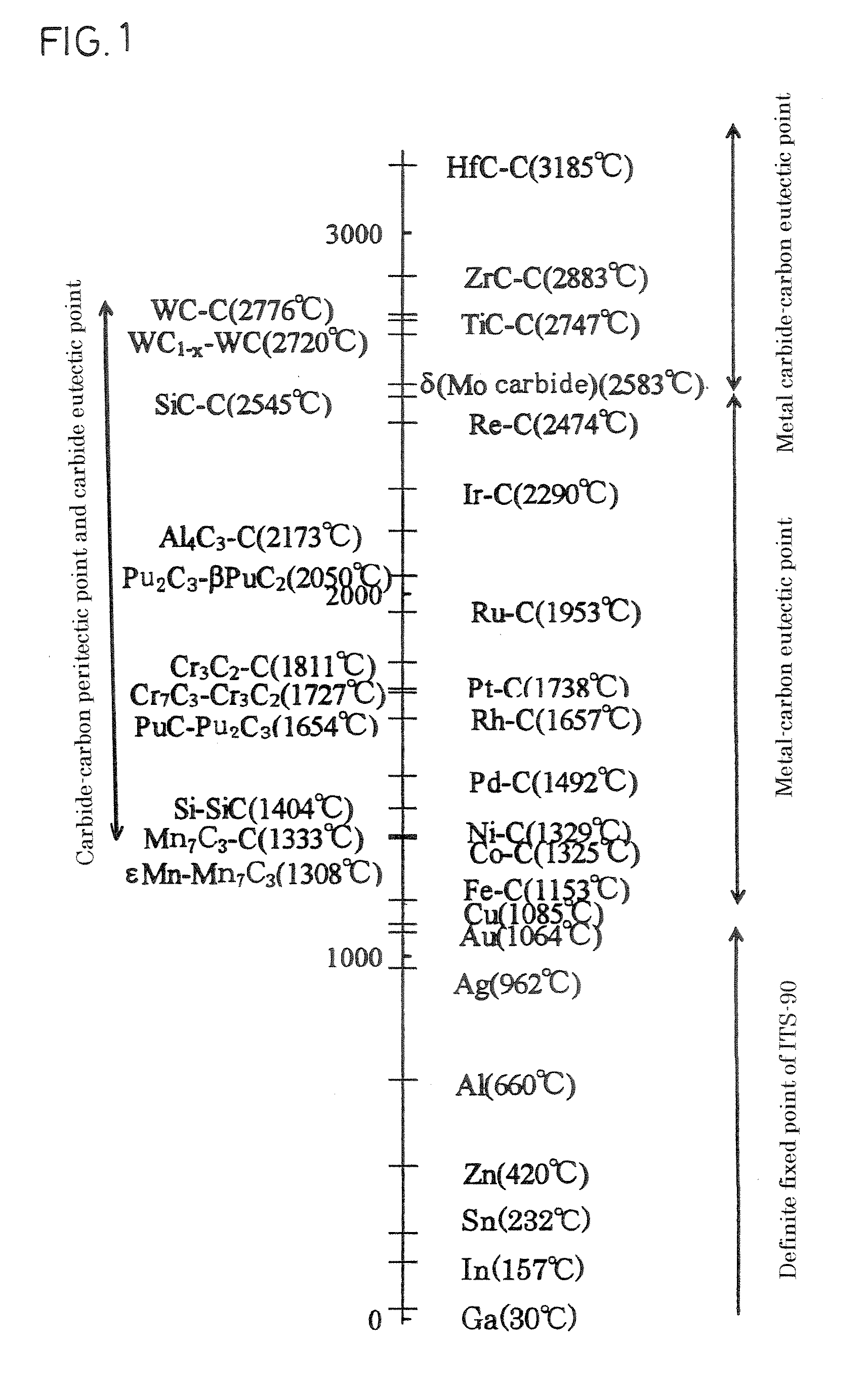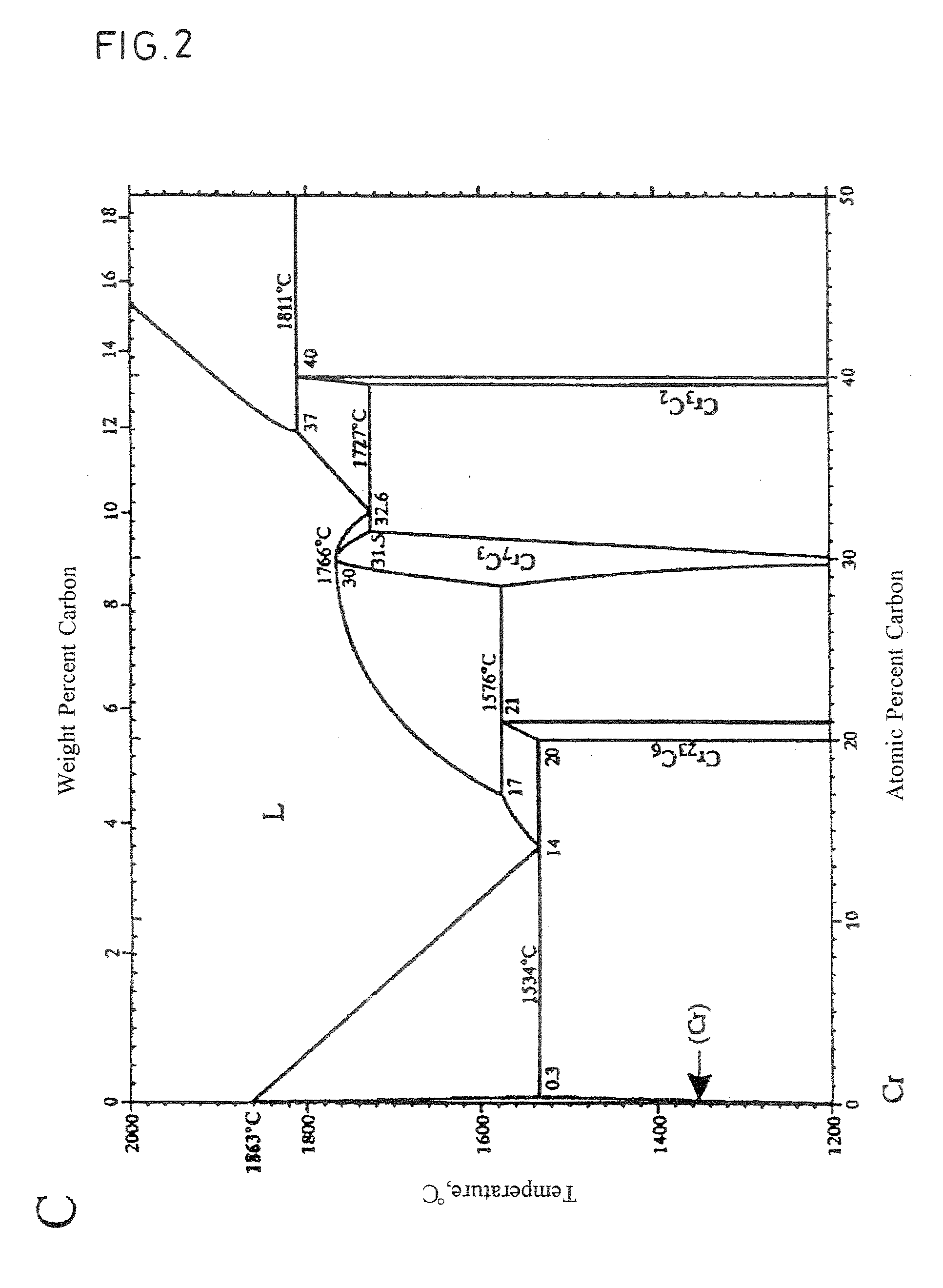Temperature fixed-point cell, temperature fixed-point device and method of calibration of thermometer
a technology of temperature fixed point and thermometer, which is applied in the direction of heat measurement, instruments, optical radiation measurement, etc., can solve the problems of crucible made of alumina, gas strip lamps, inability to acquire stable properties, and inability to easily use high accuracy strip lamps, etc., to achieve high accuracy, facilitate system maintenance, and simplify calibration work
- Summary
- Abstract
- Description
- Claims
- Application Information
AI Technical Summary
Benefits of technology
Problems solved by technology
Method used
Image
Examples
example 1
[0063] As an embodiment of this invention, the cross section of a temperature fixed-point cell 4 of Example 1 is illustrated in FIG. 3(a). The temperature fixed-point cell 4 is configured with a Cr3C2-carbon peritectic structure 2 prepared by adding 40 atom % of carbon to chromium and a crucible 1 made of graphite and having the Cr3C2-carbon peritectic structure cast therein. A blackbody cavity 3 is formed on one side of the temperature fixed-point cell 4.
[0064]FIG. 3(b) is a cross section of a temperature fixed-point device of this invention that has mounted therein the temperature fixed-point cell 4 of Example 1. The temperature fixed-point device is furnished with a temperature-variable electric furnace 20A that is adapted to increase or decrease the ambient temperature of the temperature fixed-point cell 4 and cause a radiation thermometer 9 disposed outside the temperature-variable electric furnace 20A and allocated for calibration to measure the change of intensity of the lig...
example 2
[0070] The cross section of a temperature fixed-point cell 4 of Example 2 of this invention and a temperature fixed-point device of this invention having the temperature fixed-point cell 4 disposed therein is illustrated in FIG. 5. The temperature fixed-point cell 4 of Example 2 is composed of an Mn7C3-carbon peritectic structure prepared by adding 30 atom % of carbon to manganese and a crucible made of graphite and having the Mn7C3-carbon peritectic structure cast therein.
[0071] The temperature fixed-point device illustrated in FIG. 5 is furnished with a temperature-variable electric furnace 20B adapted to increase or decrease the ambient temperature of the temperature fixed-point cell 4 of Example 2. The temperature-variable electric furnace 20B is configured with a furnace core tube 11 made of alumina and allowing the temperature fixed-point cell 4 of Example 2 to be mounted therein, a heater element 12 encircling the furnace core tube 11, and a heat insulating material 7 furthe...
PUM
 Login to View More
Login to View More Abstract
Description
Claims
Application Information
 Login to View More
Login to View More - R&D
- Intellectual Property
- Life Sciences
- Materials
- Tech Scout
- Unparalleled Data Quality
- Higher Quality Content
- 60% Fewer Hallucinations
Browse by: Latest US Patents, China's latest patents, Technical Efficacy Thesaurus, Application Domain, Technology Topic, Popular Technical Reports.
© 2025 PatSnap. All rights reserved.Legal|Privacy policy|Modern Slavery Act Transparency Statement|Sitemap|About US| Contact US: help@patsnap.com



